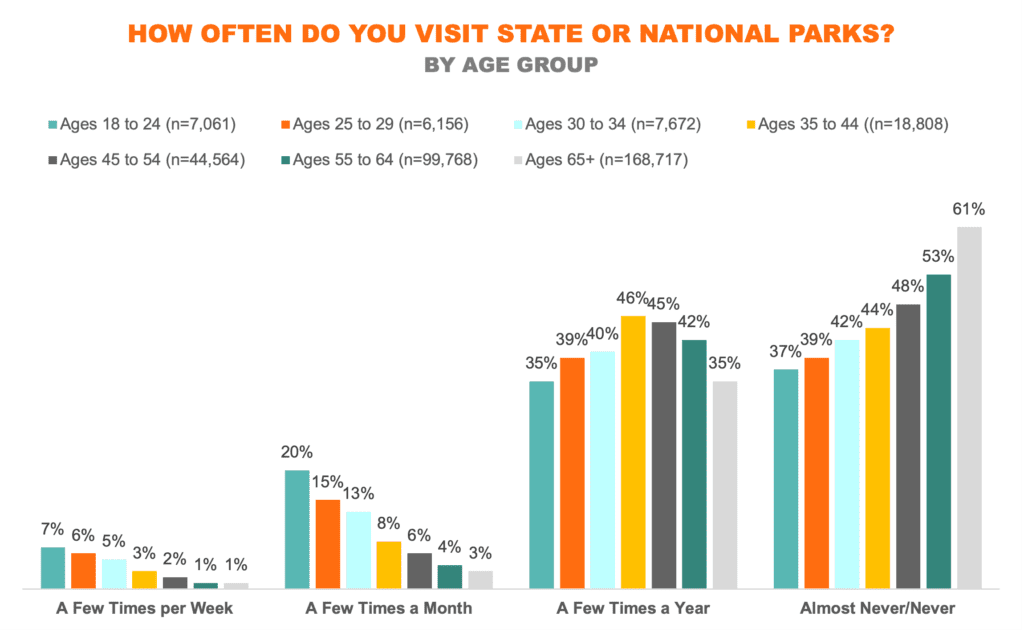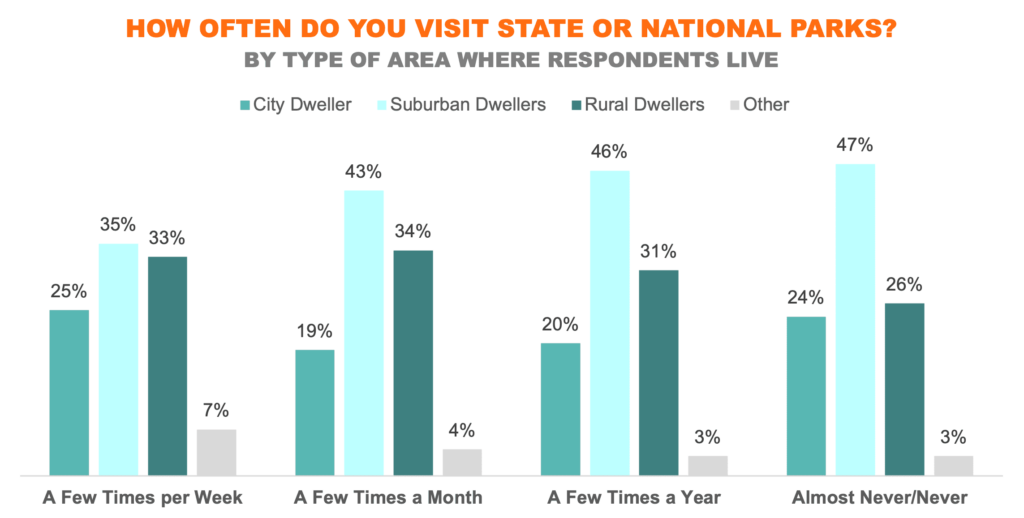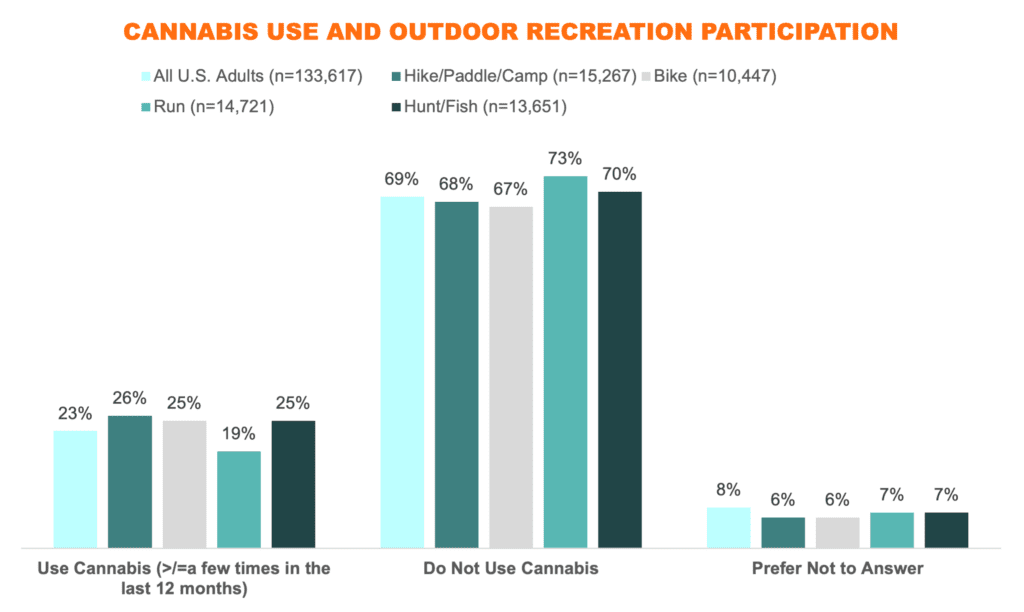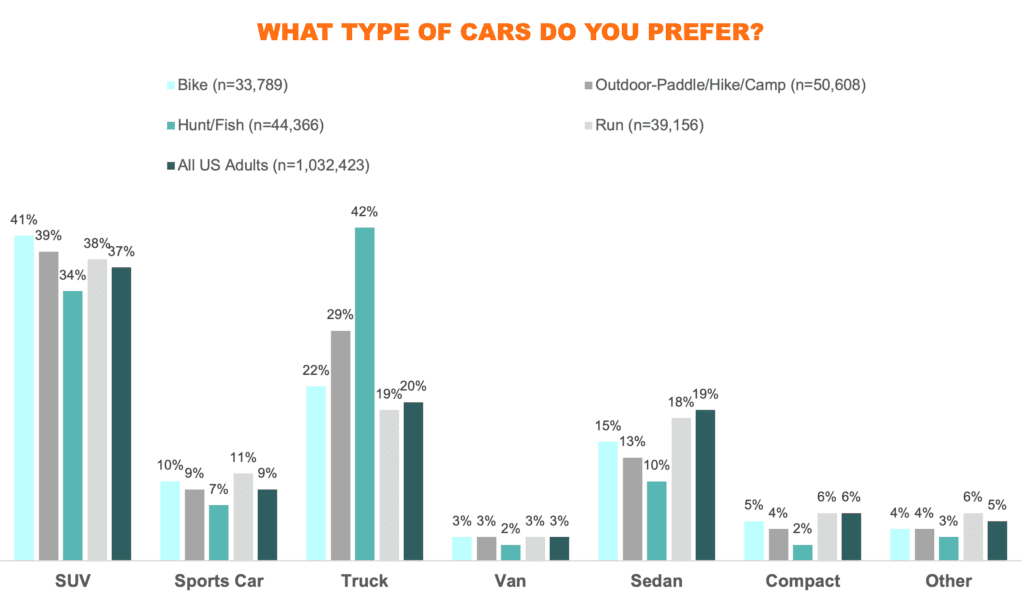Here at OIA, our research team focuses on providing you with insights into the outdoor consumer: what drives their choices, what gear they choose, and what they value about their outdoor experiences. With our newsletter — Research Roundup — we aim to deliver the best data from our partner, CivicScience, who can reach hundreds of thousands of consumers in real-time to ask questions and gather insights that give you clear insights. You’ll also gain easy access to the full catalog of research reports we offer as well as trends we are tracking.
Happy reading!

Kelly Davis
Director of Research
Who are the Outdoor Recreators Most Likely to Visit State or National Parks?
OIA has excellent data on outdoor recreation participation by category; I can tell you how many Americans hiked, ran trails, went fishing, etc. However, I couldn’t tell how many or who were visiting state and national parks until now. Data captured by CivicScience helped us build a view of who is visiting state and national parks and how often they visit. This information can help us segment outdoor recreators who are likely to visit a state or national park and target the most likely groups. The data indicate that – among American adults – younger persons, persons who are parents and grandparents, and persons who live in suburban and rural areas are more likely than others to be frequent park visitors.
Of the very small group of participants who visit state parks between a few times a month and a few times a week, younger adults edged out older participants. But – of the relatively larger group of total participants who visit state parks a few times a year – those aged 55 to 64 were more frequent visitors than younger visitors.

Parents and grandparents are more likely to visit state and national parks more frequently. Parents were most likely to visit parks, grandparents came in second, and adults with no children were least likely to visit. Note that our sample did not include children ages 17 and under.

The type of area (urban, suburban, rural) matters when predicting who is most likely to visit a state or national park. Persons who live in urban environments are least likely to visit a state or national park. Persons who live in the suburbs are most likely to visit state and national parks, and rural residents are most likely to be frequent park visitors, but about the same percentage of urban and rural dwellers say they almost never or never visit state or national parks.

Do Outdoor Recreators Use Cannabis?
On October 6 of this year, President Biden signed an executive order that pardoned all federal offenses of simple marijuana possession, and ordered the Department of Health and Human Services to review how marijuana is scheduled under federal law where it is currently classified as a “Schedule I” substance along with far more dangerous substances including methamphetamine, heroin, and cocaine. Whenever cannabis is in the news, the OIA research team gets questions about outdoor recreation and cannabis use. In the past, we have speculated about the intersection of outdoor and cannabis; this time we used empirical data from CivicScience to show how cannabis use varies between outdoor recreation participants and non-participants.
Overall, outdoor recreation participants are more likely to use cannabis than the average American, except for runners who are less likely to use cannabis than the average American. The chart below shows that 26% of hiking, camping, and fishing participants; 1 in 4 bicycle riders; and 1 in 4 hunting and fishing participants say they are cannabis users. Note that this is not a measure of cannabis use during outdoor recreation; it is simply a measurement of general use among those who participate in those activities.

What Types of Cars Do Outdoor Recreation Participants Choose?
One of the psychographics we commonly use to correlate activities across market research is the type of car a respondent drives. This is an area of keen interest, not only to the automotive industry but to outdoor accessories manufacturers (think racks), gear manufacturers, and even apparel brands. Knowing what kind of car someone prefers can provide a deeper look into their consumer type and choices. Purchasing a car is one of the biggest purchases many consumers make. If we know what type of vehicle someone drives, it can help us predict other purchases and behaviors across a wide variety of categories.
Consider that persons who hunt or fish are most likely, by a significant margin, to prefer a truck. That’s not a huge surprise, but it helps us better understand how to market products and services to that group. Note that runners are more likely than others to prefer sports cars and sedans. Bicyclists are most likely to prefer an SUV. The majority (68%) of outdoor enthusiasts who camp, hike, or paddle prefer either an SUV or a truck. The following chart indicates that outdoor recreation participants tend to prefer vehicles that facilitate their love of the outdoors by buying vehicles that can transport both them and their gear.

Trend Spotter: Trekking Poles!

Maybe it’s the spread of hiking content on social media, but whether it’s a TikTok or Instagram-driven trend or not, trekking poles seem to be everywhere right now, from the fists of casual hikers on local trails to thru-hikers on the PCT and the AT. I had received questions about this, so I turned to a source that I knew had his finger on the trekking pole pulse: Reese Brown, executive director of the Cross Country Ski Areas Association. Cross-country ski poles are a requisite part of a cross-country ski kit – you aren’t going far without them if you’re skiing on XC trails, so the makers of those poles are very familiar to those in the cross-country ski category. Additionally, Reese has been trying to convince me to try trekking poles for longer, more technical hikes for many years.
“Trekking poles make walking and hiking a more balanced physical experience by fully incorporating the upper body. In addition to better efficiency overall, you will take the stress off critical joints like knees and ankles reducing the chance of injury from an accident or from overuse.” (Reese Brown, Executive Director, CCSAA)





